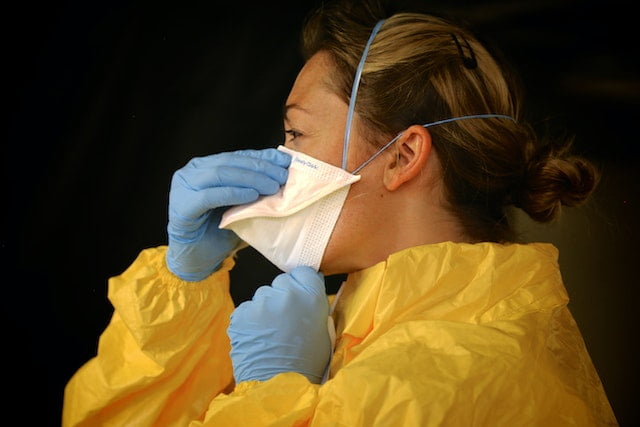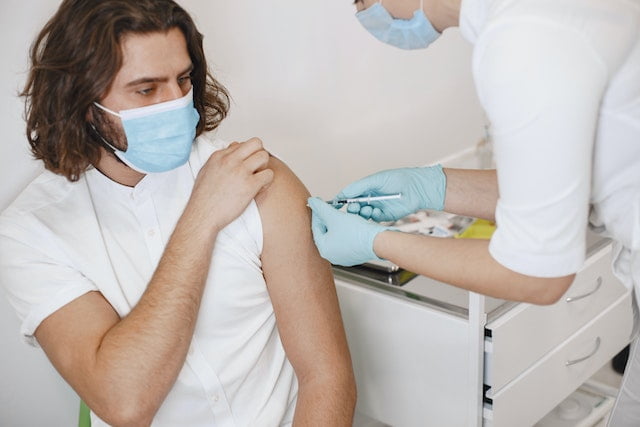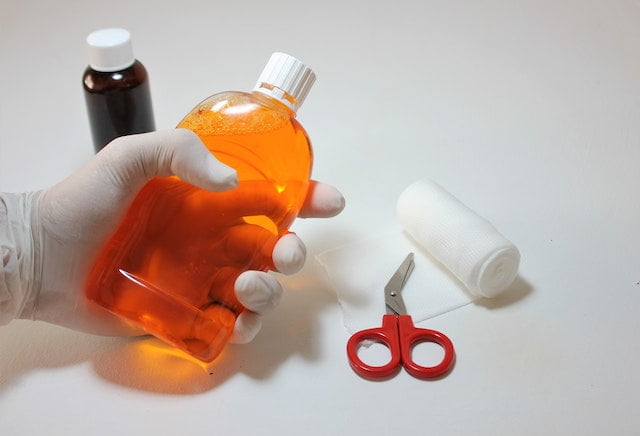Hospitals spend a lot of their budget on the items which are necessary for the conduction of different medical and surgical procedures. These articles include surgical instruments, imaging machines, lab testing apparatus, as well as day-to-day use items. Among these, there is an elevated demand for the items which are consumed in high concentration and need to be constantly supplied to healthcare facilities. Such items are referred to as consumables. In this article, we will explore a comprehensive hospital consumables list, encompassing essential items like syringes, gloves, dressings, bandages, gauze, disinfectants, surgical sutures, catheters, and more. Join us as we delve into the significance of these consumables in promoting efficient healthcare practices and ensuring patient well-being.

A healthcare professional wearing consumable items
In this article, an effort has been made to compile a hospital consumables list to give a comprehensive idea about them but let us first understand what consumables are.
What are consumables?
Consumables are goods that wear out usually after a single use and need constant replacement. These items, due to being extremely runny, are needed for the purpose of dressing the site of injury or the sutured body parts.

Consumable items being used during a medical procedure
List of consumables used in hospitals
During medical and surgical procedures, a vast range of consumable items are needed which have been summarized in the following table. The items may vary based on the type of procedure or surgery to be conducted. Some of these items are single-use while the others can be used more than once in medical facilities.
| Bandages (cotton, crepe) | Sterilized bandages | Epidural anesthesia kit |
| Personal protective equipment | Disposable clothes | Surgical garments |
| Surgical syringes | Rapid test kits | Sterilization rolls |
| Gauze cloth | Surgeon’s blade | Spinal needles |
| Lint cloth | Sutures | Corrugated drains |
| Gloves and drapes | Conduction medium | Gelatin sponges |
| Intravenous cannula | Hypoattestic paper tape | Plastic apron |
| IV set | ECG rolls | X-ray films |
| Surgeon’s cap and mask | Ryle’s tube | HIV protection kit |
| Abdominal swab | Catheters (Condom, Foley, Intermittent) | Skin traction kit |
| Vacuum suction drainage set | Urine collection bags | Digital thermometer |
| Yanker suction kit | Ortho cast padding | Airway |
| Ortho implants | Endotracheal tubes | Splints |
| Skin traction kit | Suture needles | Lab reagents |
| Hematology test kits | Microbiology test kits | PCR test kits |
| Disinfection and hygiene products | DNA test kit | Molecular biological tests |
| Wound care kits | Plasters | Adult and baby diapers |
| Duct tape | Waterproofing pads | Non-latex cleaning gloves |
| Paper cup lids | Instant ice | Hand sanitizers |
| Serum sets | Blood transfusion sets | Wet wipes |
| Intraocular lenses | Rubber sheeting | Shoe covers |
| Sterile surgical cover sets | Antibacterial Wet wipes/towelettes | Washable face masks |
| Bedpans | Nutritional supplement drinks | Urinals |
| Distilled water | Bendable drinking straw | Nutritional drinks for diabetics |
| Emesis bins | Buckets | Trach care tray |
| Baggies | Bleach | Scissors (blunt-end) |
| Cervical collar | Saniwipe disinfectant towels | Scissors (sharp-end) |
| Automatic blood pressure cuffs | Colonoscopy paste, wafers, skin preps, ileostomy bags | Saline solution |
| Safety pins | Spray bottles | Nebulizer |
| TEFLA dressing | K-Y jelly | Peroxide |
| Chemical-free shampoo | Chemical-free body washes | T.E.D. compression stockings |
| Extension cord | Air pump | Power strips |
| Biohazard bags | Cotton balls | Cotton swabs |
Purpose of using consumables
The main purpose of using the consumables items are multiple which include the following:
- Consumables serve as a shield between the physician/healthcare staff and the patient thus reducing the chances of cross-contamination. Items such as gloves, drapes, and masks not only protect the caregiver from acquiring an infection but also diminish the risk of worsening an existing health-related condition in the patient.

Day-to-day consumable items
- Consumables, when employed, facilitate the medical procedures as a result of which ease is provided to the patient. Items such as catheters, urine bags, etc. help with the management of urine drainage in patients with conditions like urinary tract infections, among others. Moreover, these are also useful in patients who are put in a post-surgical medication-induced coma on a temporary basis.
- Items such as bandages, wipes, etc. also protect the site of injury/surgery from the environment thus minimizing further damage and easing the recovery process by speeding it up.
Disposing off the consumables
After the consumables have served the purpose for which they were employed, it is essential to discard them properly as these may contain the remnants of medications, microbes, or blood which can become the cause of infections once come into contact.
Conclusion
Consumable items in a hospital are extensively used products that aid the processes such as diagnosis, treatment as well as surgery. A hospital consumables list comprises the items which are runny and get consumed quickly over a shorter period of time resulting in a need for their replacement. The use of these items not only elevates the efficiency of the healthcare provider but also enhances the patient’s safety by reducing the chances of getting an infection.

PhD Scholar (Pharmaceutics), MPhil (Pharmaceutics), Pharm D, B. Sc.
Uzma Zafar is a dedicated and highly motivated pharmaceutical professional currently pursuing her PhD in Pharmaceutics at the Punjab University College of Pharmacy, University of the Punjab. With a comprehensive academic and research background, Uzma has consistently excelled in her studies, securing first division throughout her educational journey.
Uzma’s passion for the pharmaceutical field is evident from her active engagement during her Doctor of Pharmacy (Pharm.D) program, where she not only mastered industrial techniques and clinical case studies but also delved into marketing strategies and management skills.
Throughout her career, Uzma has actively contributed to the pharmaceutical sciences, with specific research on suspension formulation and Hepatitis C risk factors and side effects. Additionally, Uzma has lent her expertise to review and fact-check articles for the Health Supply 770 blog, ensuring the accuracy and reliability of the information presented.
As she continues her PhD, expected to complete in 2025, Uzma is eager to contribute further to the field by combining her deep knowledge of pharmaceutics with real-world applications to meet global professional standards and challenges.








